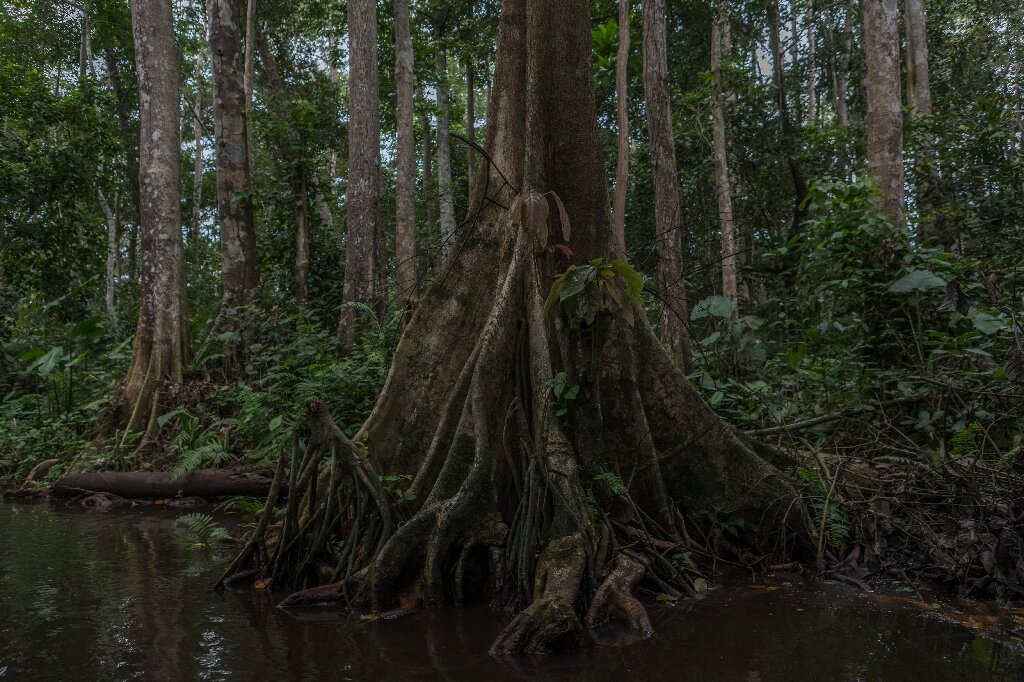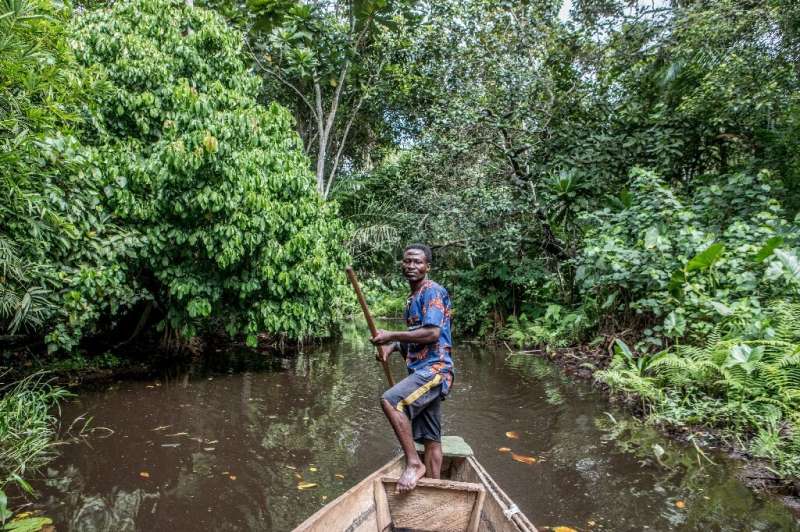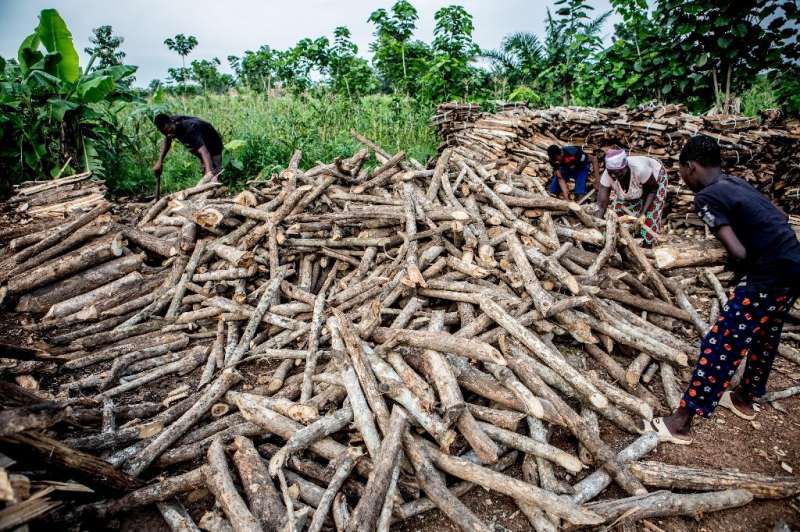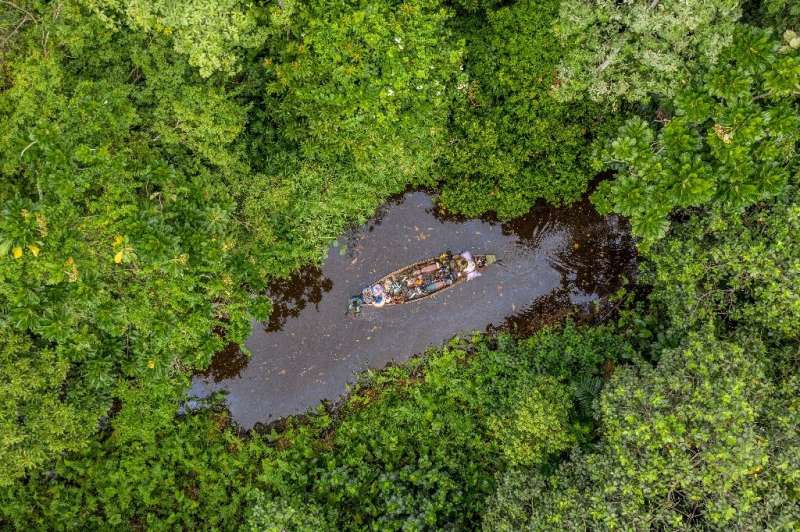
[ad_1]

The Hlanzoun freshwater swamp forest is one of the last of its kind in Benin and is in danger of disappearing.
In the freshwater swamp forest of Hlanzoun in southern Benin, majestic trees hum with the chirping of birds and playful monkeys.
Once home to vibrant flora and fauna, experts are now warning that the fragile environment, one of the last of its kind in this West African country and accessible only by canoe, is in danger of disappearing.
The 3,000 hectares (7,400 acres) of forest, which takes its name from the Hlan River, is home to 241 plant and 160 animal species, including the rare red-bellied monkey, the swamp mongoose and the sitatunga, a swamp antelope. .
Perched atop a gigantic tree, grows a hornbill, a large bird known for its long, curved and colorful bill, similar to that of toucans.
“Hornbills feed on insects and fruits. They like to follow monkeys because they force the insects out when they move, which makes it easier to capture hornbills,” explains Vincent Romera, a French ornithologist and photographer.
With her binoculars, Romera admires a family of monkeys leaping from tree to tree, while keeping a good distance.
“The animals here have become fearful,” he says. He plans to use camera traps to try to photograph them, but also to count the animal population of the forest.

The 3,000 hectares (7,400 acres) of forest, named after the Hlan River, can only be accessed by canoe.
“The numbers are in free fall,” he says.
Sometimes the loud concert of the forest is interrupted by gunfire, he says, probably from poachers.
Registration
Communities living around the forest “need money, so those who know how to shoot will kill animals,” says Roger Hounkanrin, a local tourist guide.
Despite steady economic growth in recent years, poverty is widespread in Benin, especially in rural areas, and 40 percent of the population lives below the poverty line according to World Bank data.
Along the road that borders the forest of Hlanzoun, lizards, crocodiles and snakes killed by hunters are sold and bought. Monkeys are also sometimes sold for meat.
But more than poaching, excessive logging threatens the forest.
Between 2005 and 2015, Benin’s forest cover was reduced by more than 20 percent according to the World Bank, and the rate of deforestation continues to be high at 2.2 percent per year.

Between 2005 and 2015, Benin’s forest cover was reduced by more than 20 percent, according to the World Bank.
The trees are cut for firewood, and the fermented sap of the palm trees is used to make a local alcohol, sodabi.
The harmful practice of slash-and-burn agriculture has also become more widespread, warns Josea Dossou Bodjrenou, director of Nature Tropicale, a non-governmental organization (NGO) that works on environmental issues in Benin.
Destruction of forest habitat reduces the areas where animals can thrive, forcing them to head to farms for food and exposing them to poachers.
“It’s a place that is in danger of disappearing,” says local agricultural economist Judicael Alladatin.
“It is a poor region and we cannot blame people for wanting to feed themselves,” Alladatin said, urging the authorities “to create conditions for alternative sources of income”.
The government does not officially recognize the Hlanzoun forest despite the lobbying efforts of several NGOs and scientific articles on the forest since 2000.

The government does not officially recognize Hlanzoun despite lobbying efforts.
But he began to recognize the importance of saving forests in general, according to the World Bank.
In Hlanzoun, the state “must act quickly”, said Bodjrenou, and “support forest communities so that they can continue to make a profit … but in a different way” by developing agriculture, trade. and sustainable tourism.
Light at the end of the tunnel: the restored forest is now home to dozens of endangered species
© 2021 AFP
Quote: Benin’s rare swamp forest “in danger of disappearing” (2021, August 30) retrieved on August 30, 2021 from https://phys.org/news/2021-08-benin-rare-swamp-forest.html
This document is subject to copyright. Other than fair use for private study or research purposes, no part may be reproduced without written permission. The content is provided for information only.
[ad_2]
Source link